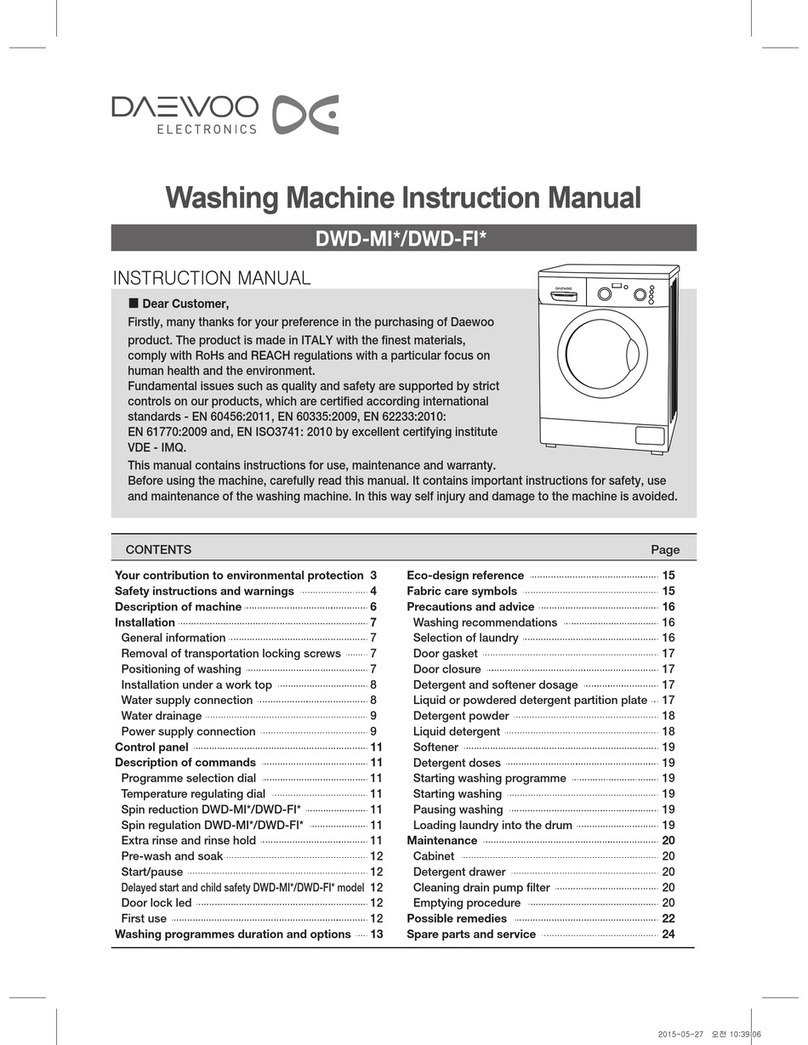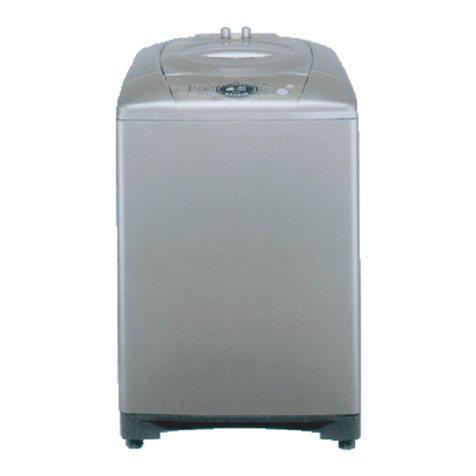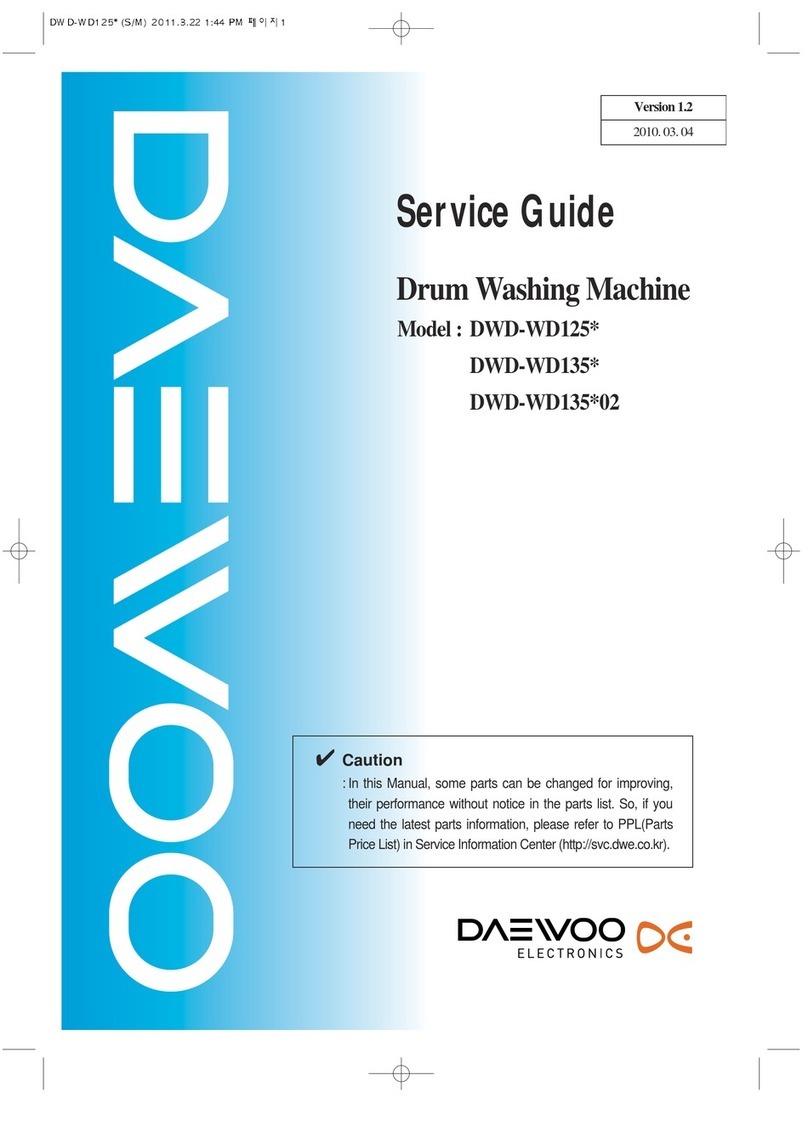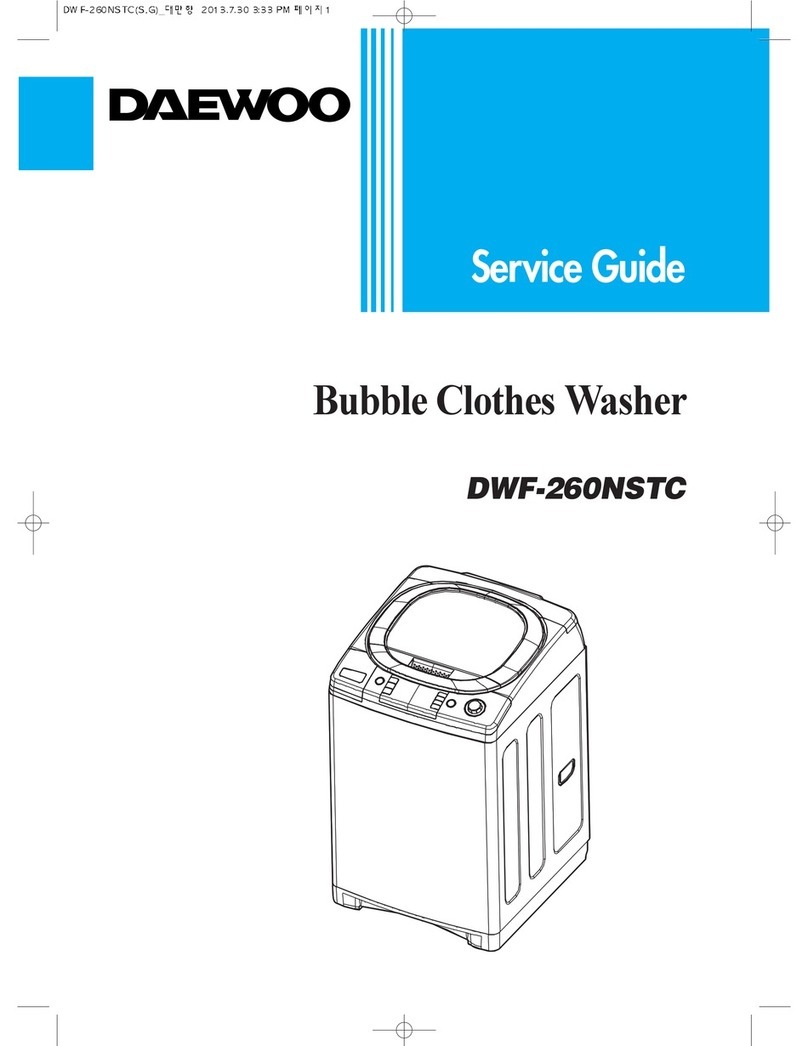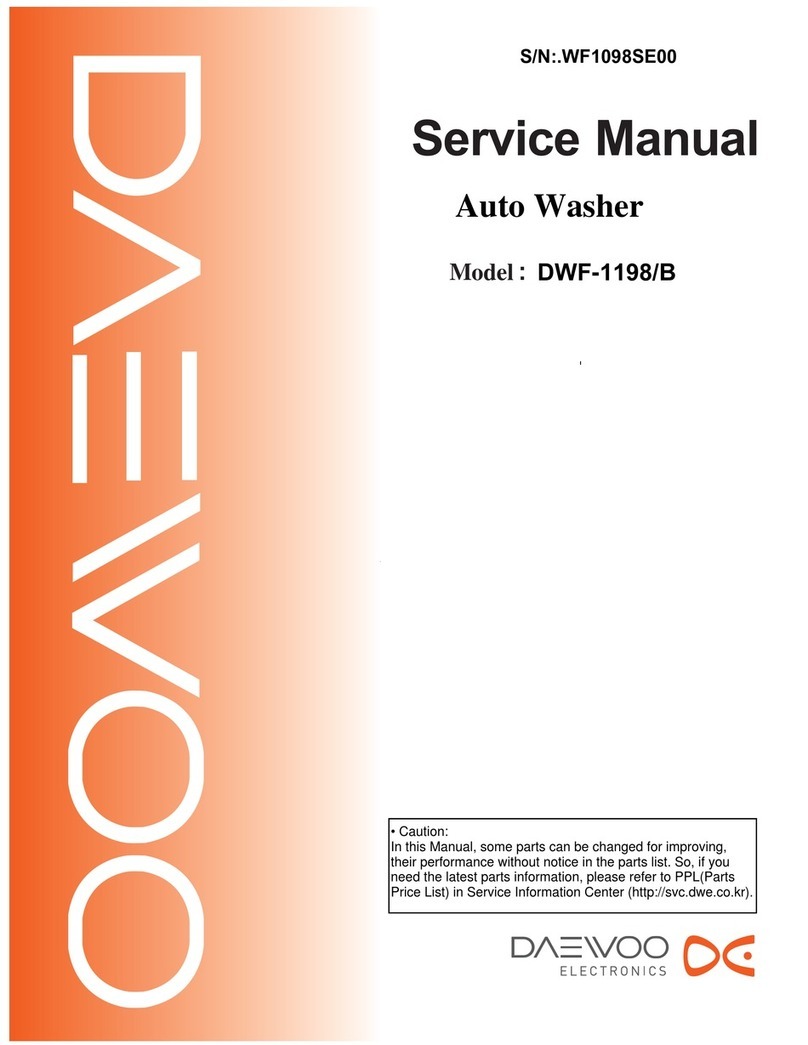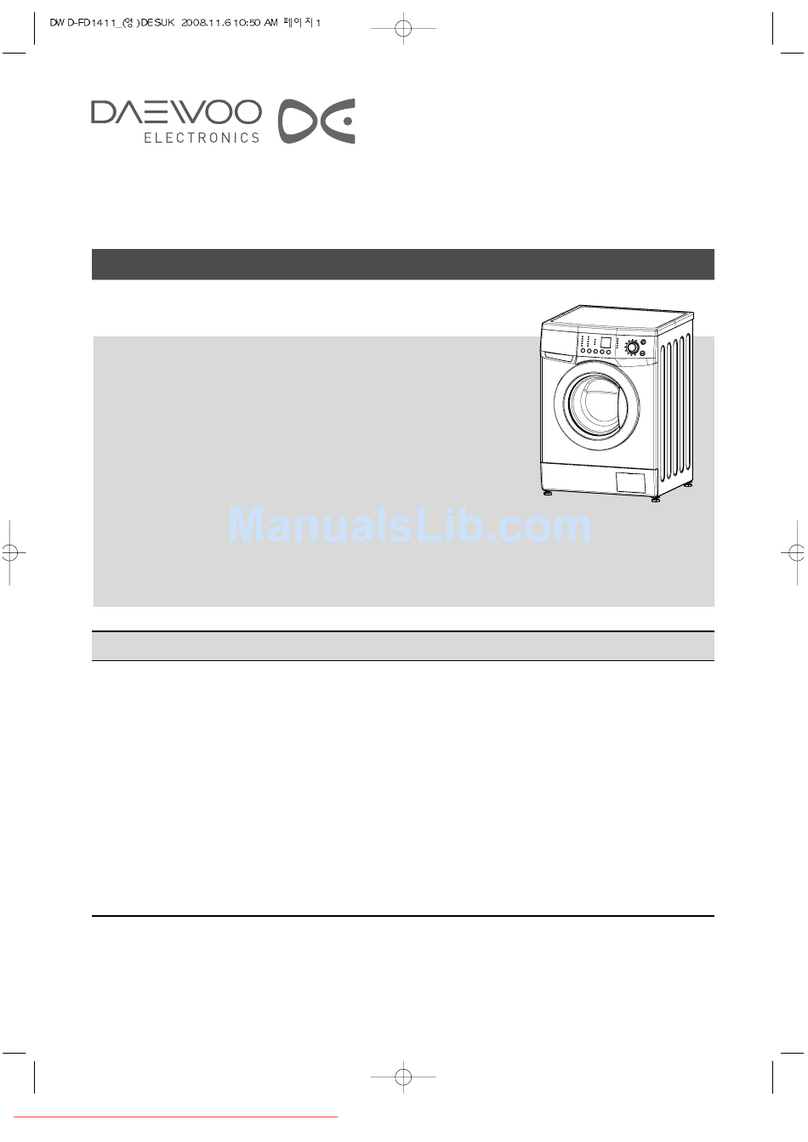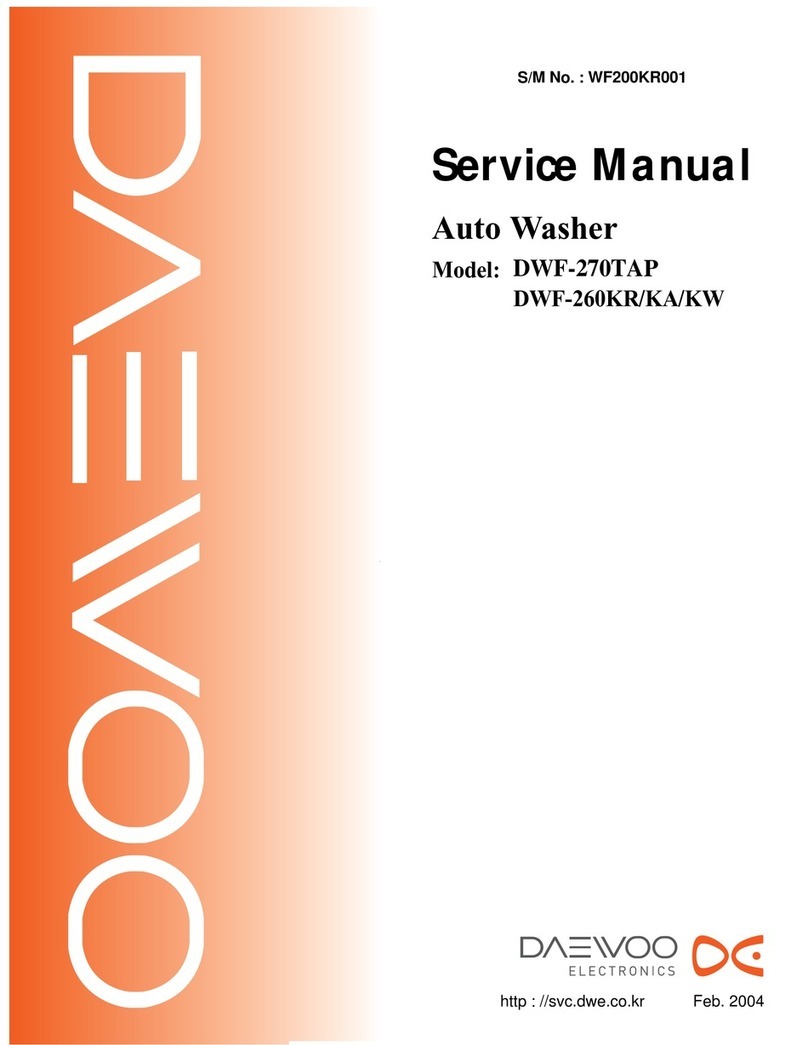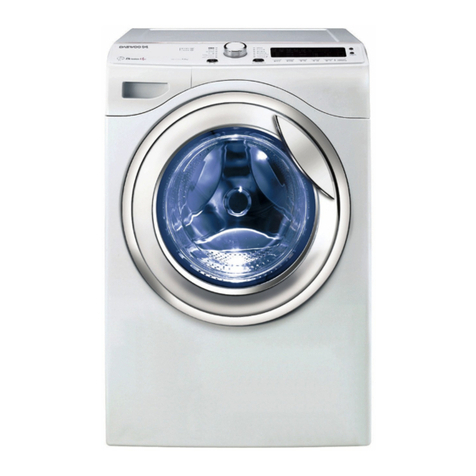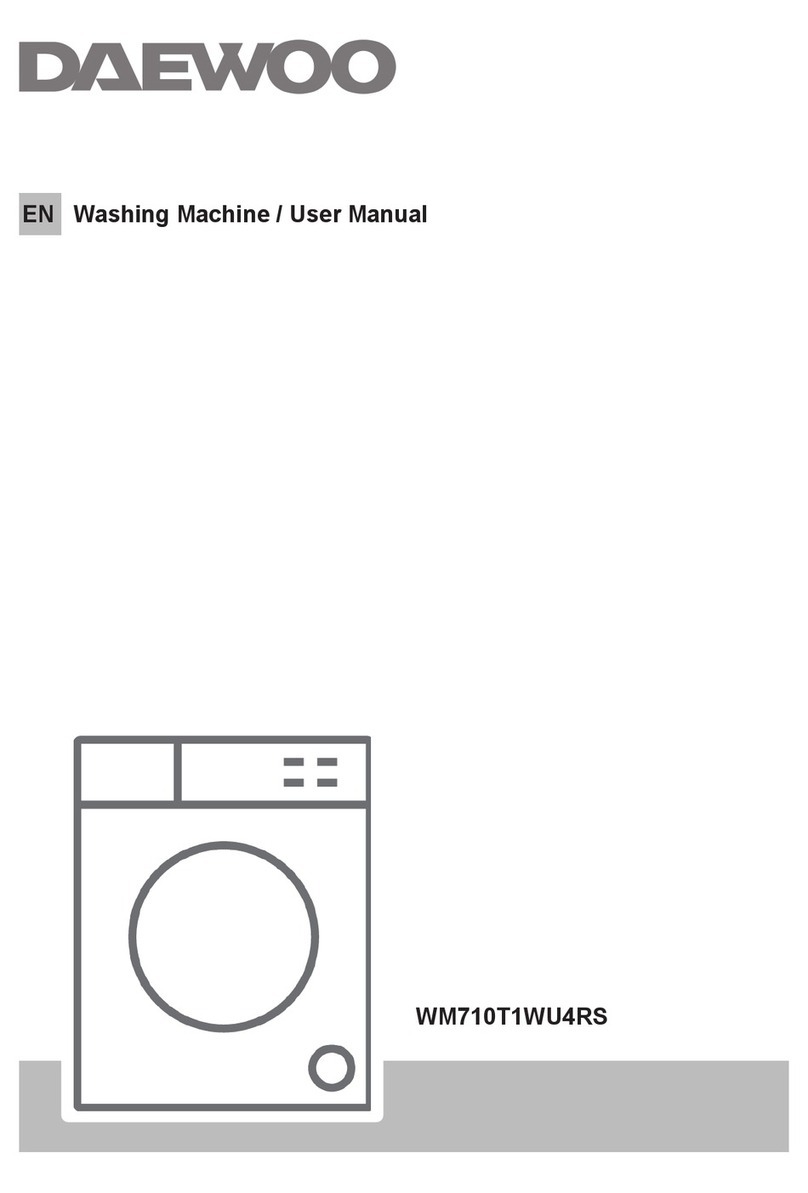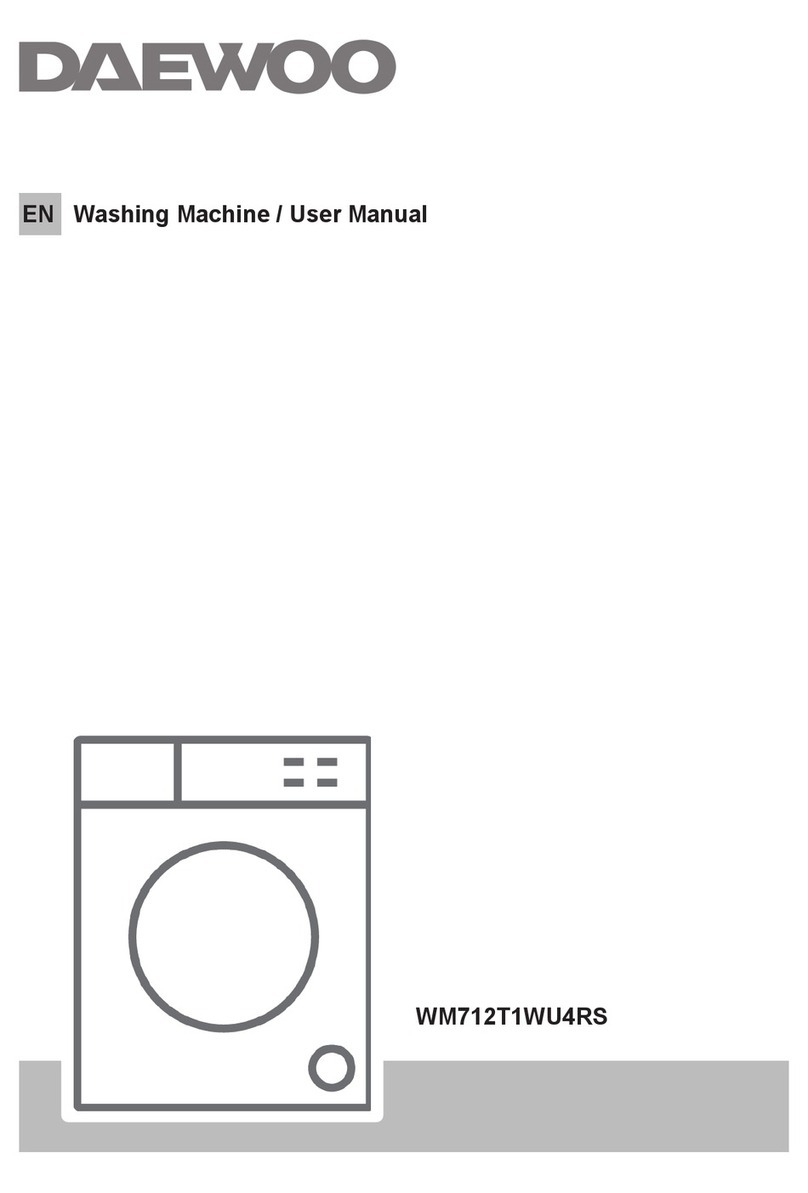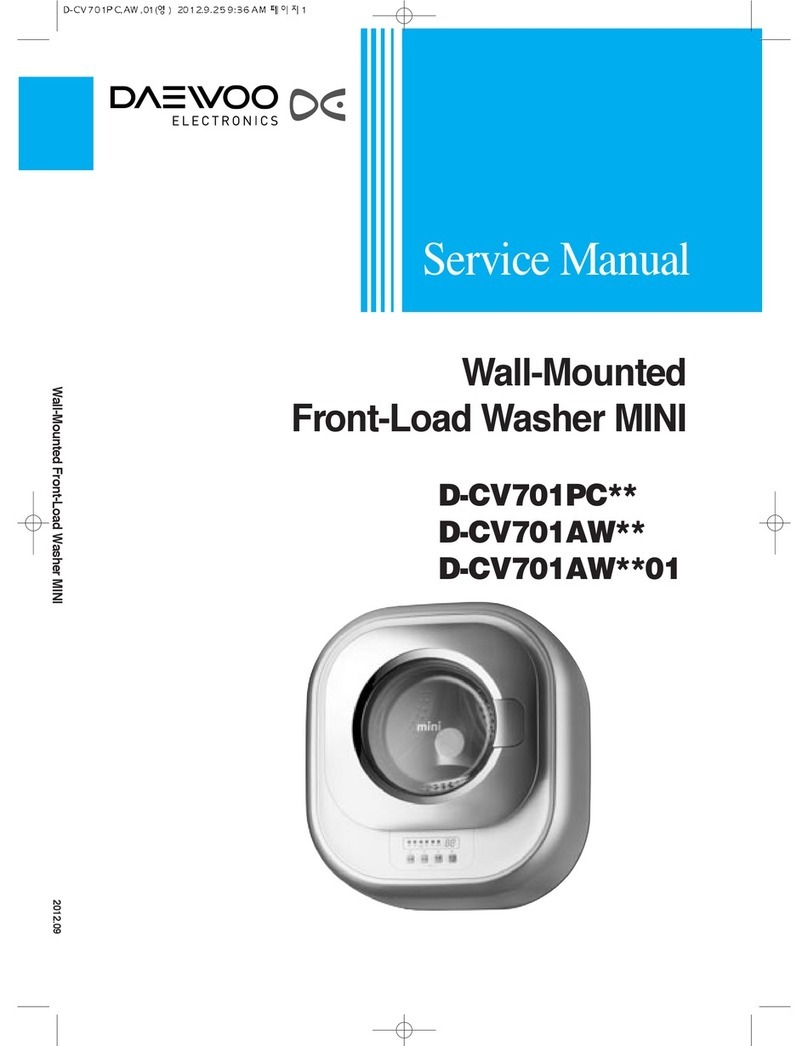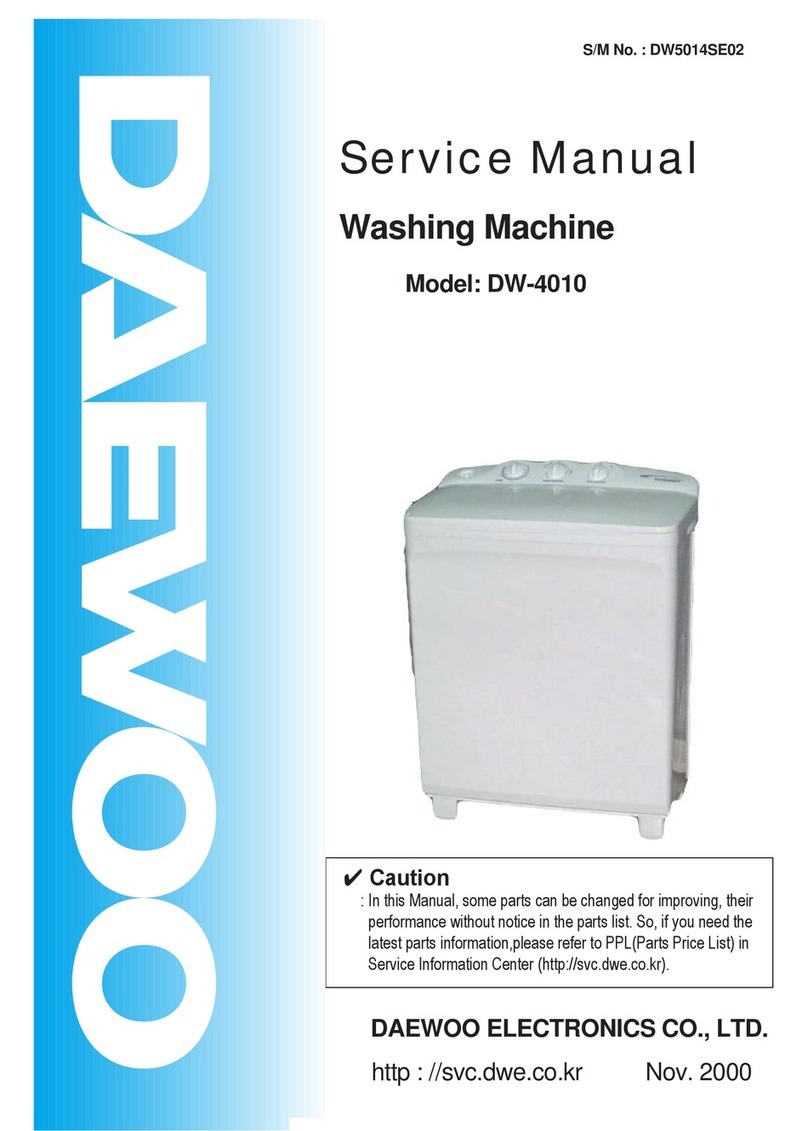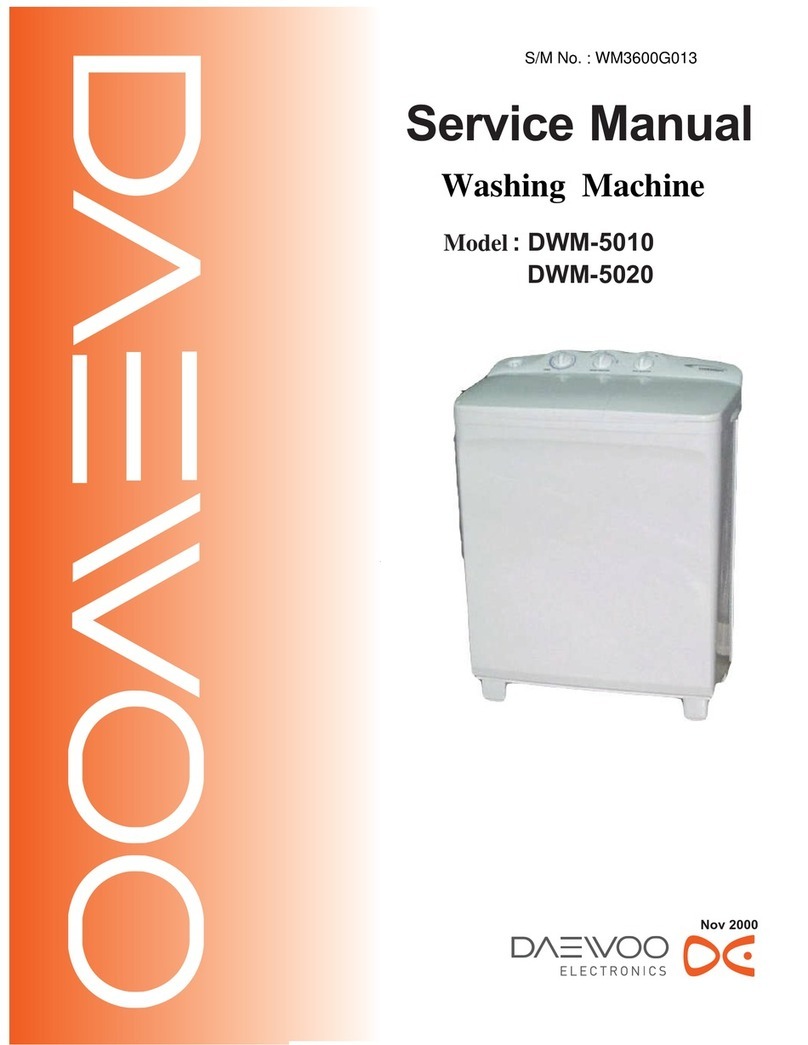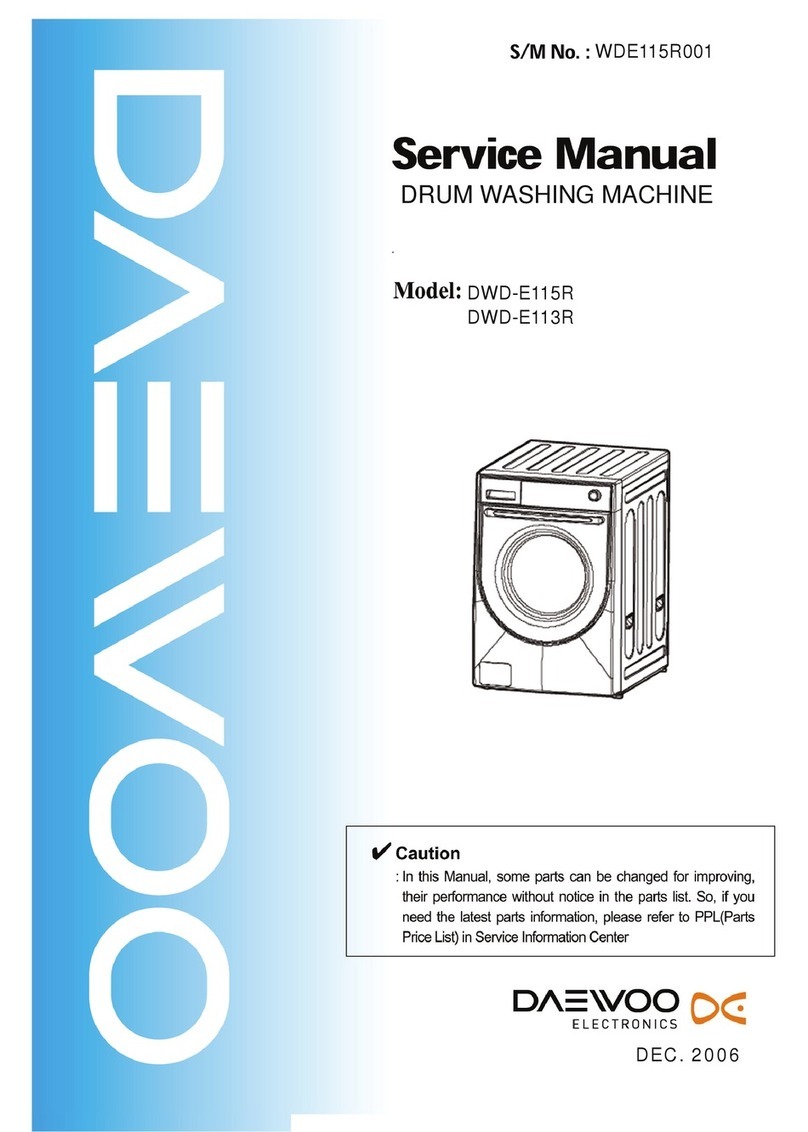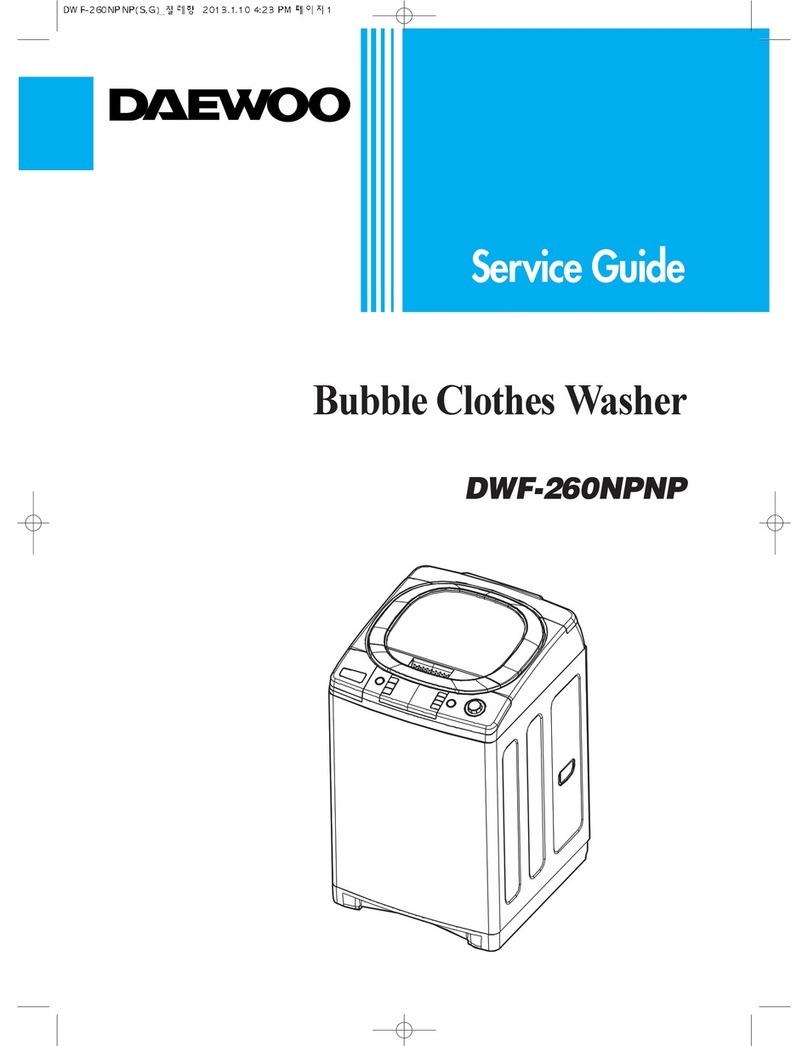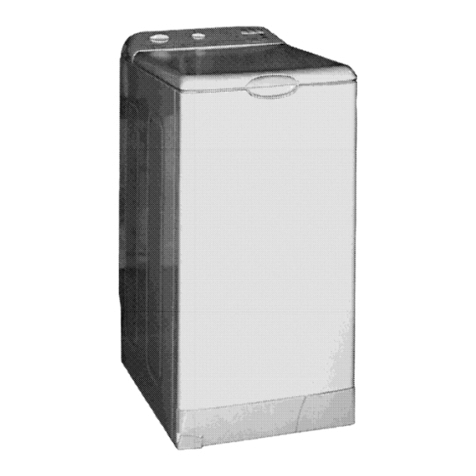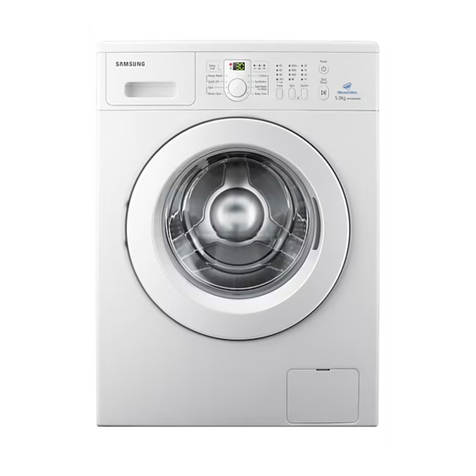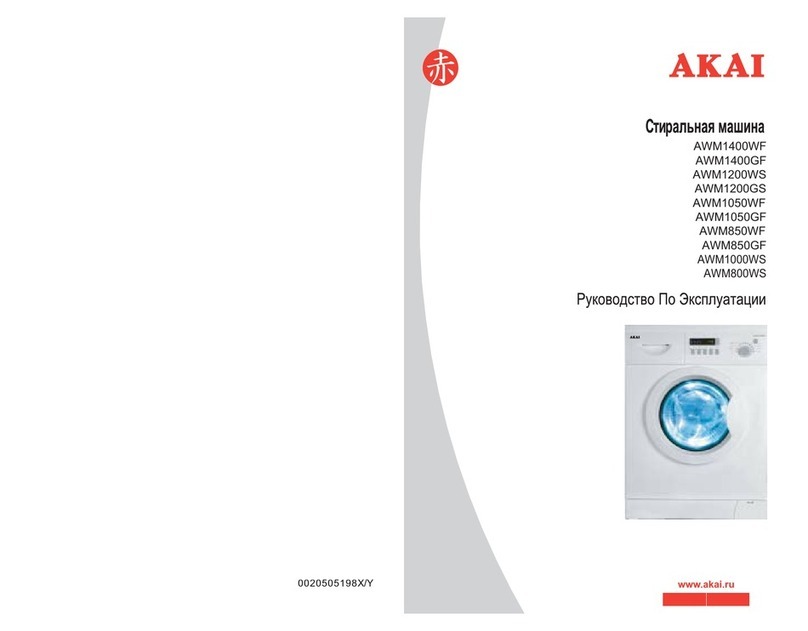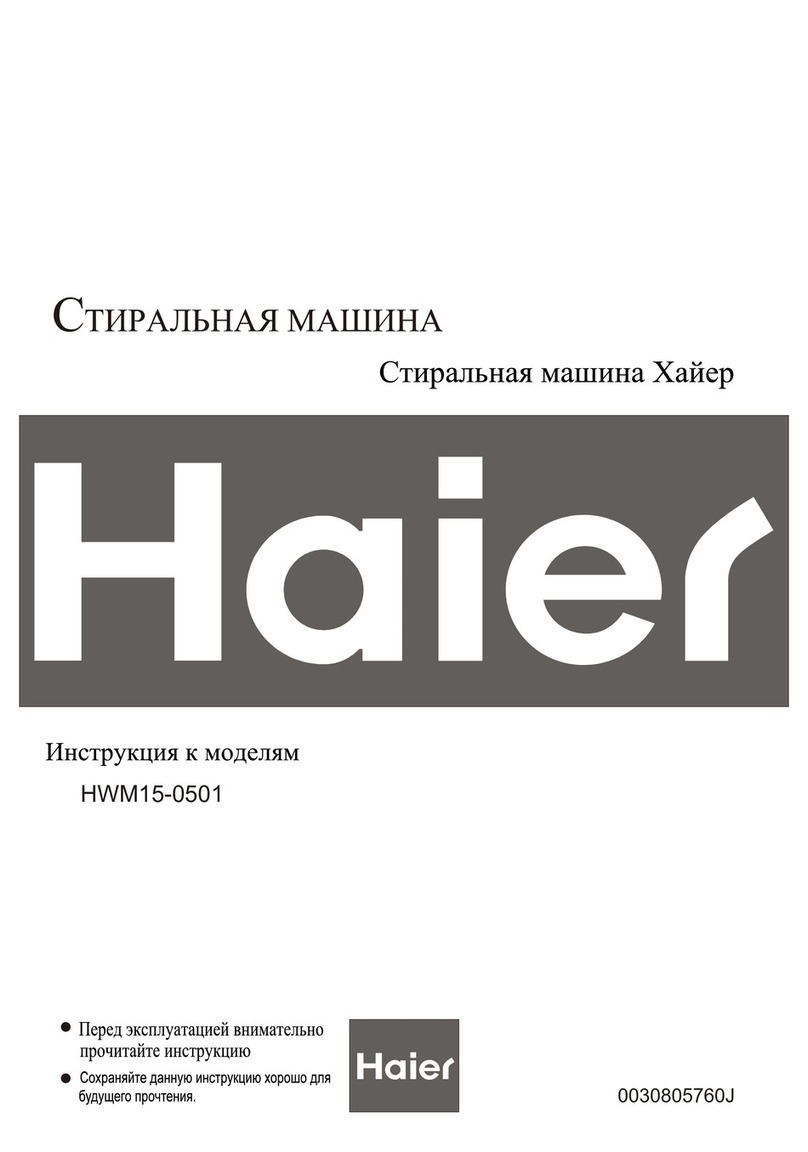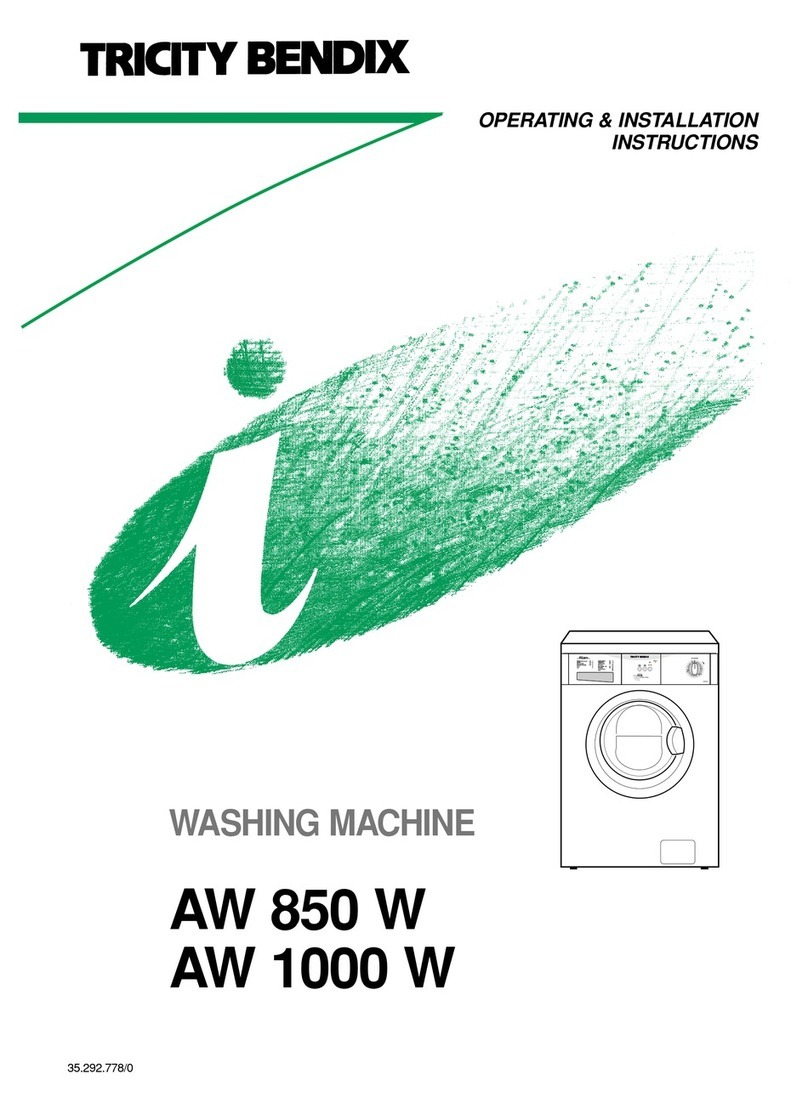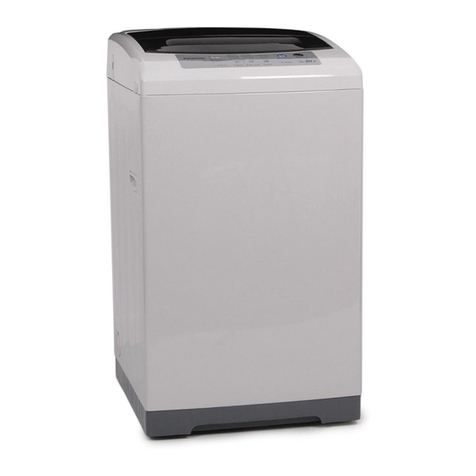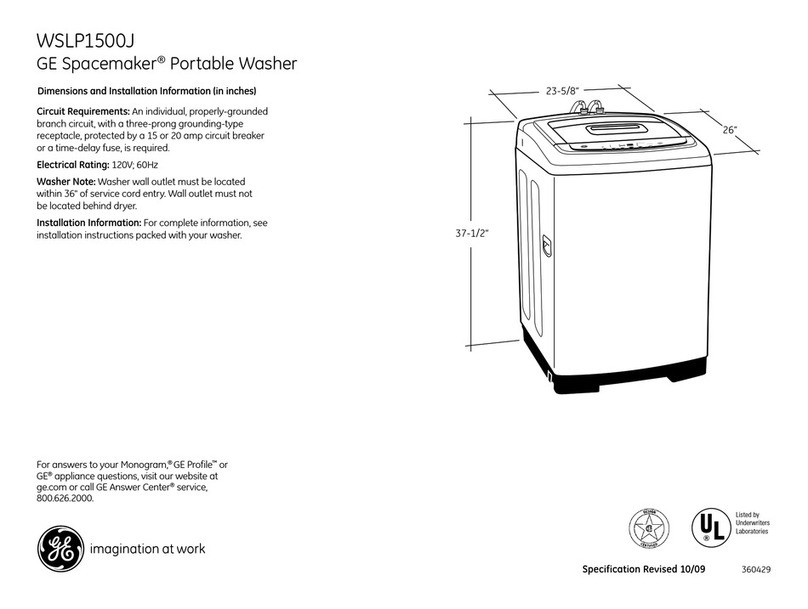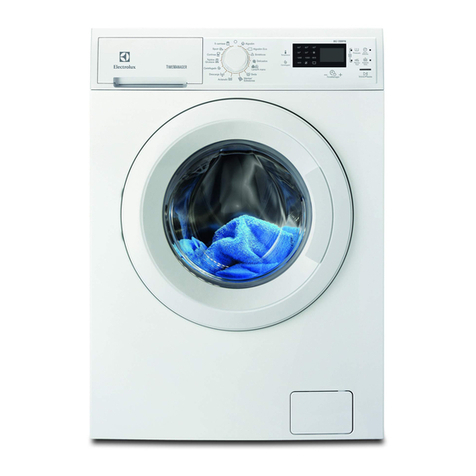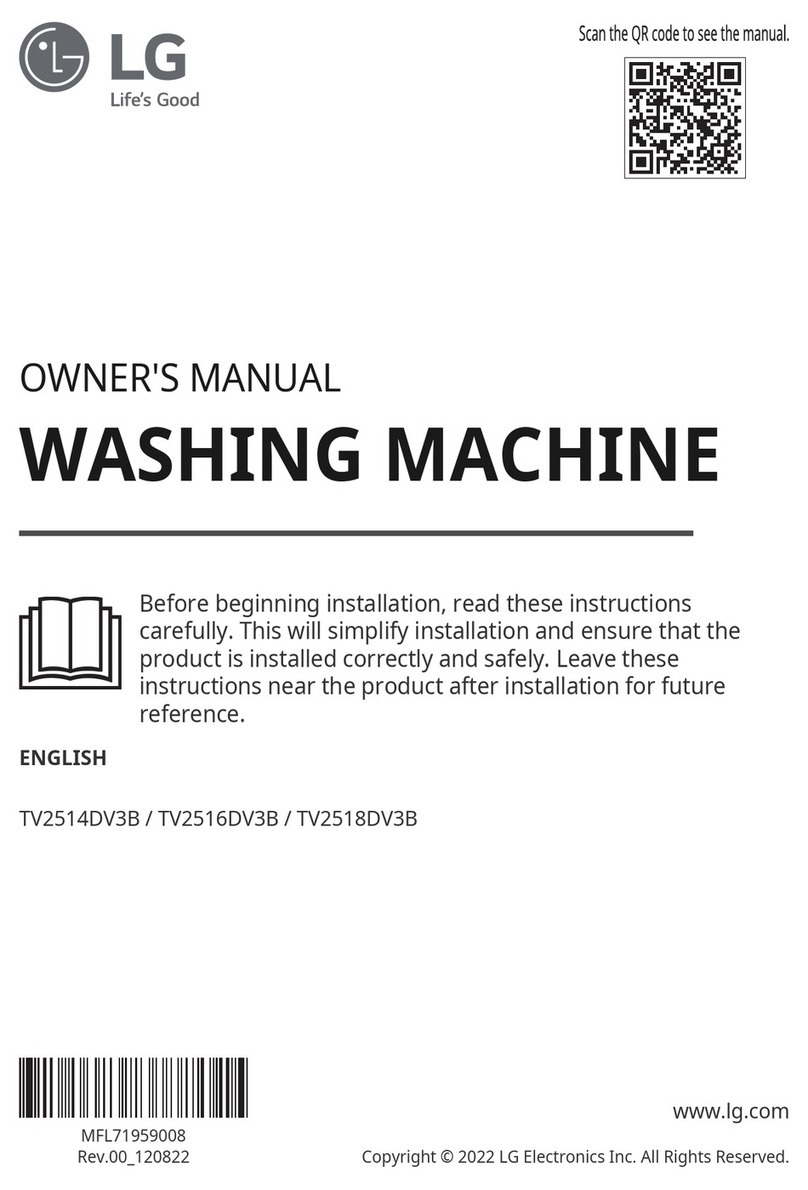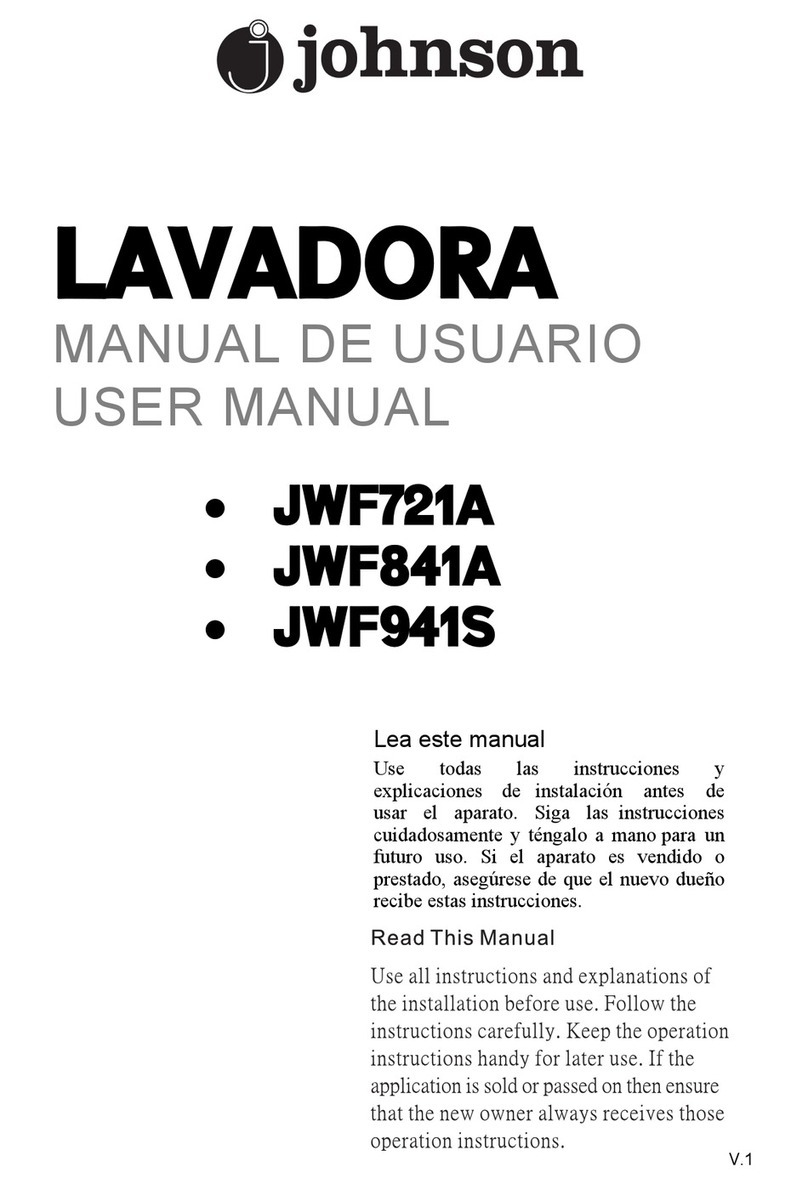Install Washing Dryer
1.This machine must be earthed properly. If there is any short circuit, earthing can reduce
the danger of electrical shock.
This machine is equipped with power cord, which includes plug, earthing wire at earthing
terminal.
2.Washing machine shall be operated in a circuit separate from other electrical appliances.
Otherwise, power protector may be tripped or fuse may be burned out.
!
WARNING
Operate Front Load Washer Dryer
Checklist and Preparation before Washing Clothes
Please read this operation method carefully to avoid the troubles of Washer and Dryer and
damages of clothes.
Washing hints
Check if the first-washed clothes will bed decolorized.
After a white towel touched with liquid detergent is used to wash the invisible corners of
the clothes, check if the white towel is stained
with clothes' original color.
As for the scarves and those clothes that easily
get decolorized among imported clothes, please
wash them separately before washing.
As for the stains on sleeves, collars and pockets,
use the liquid detergent and wash it with brush
gently. Finally put them into the washing machine
to achieve more ideal washing effects.
As for temperature-sensitive clothes, they shall be washed as required in the labels.
Otherwise, it may cause color change or distortion.
Keep in Mind:
Never put the clothes to be washed in washing machine for a long period of time.
Otherwise it may get moldy and cause spots. Therefore, please wash the clothes in time.
The clothes also may get color changed or distorted if they are not washed according to
the stated washing temperature.
Clothes that can not be washed by Washer Dryer
The clothes that may get distorted if being immersed in water:
Ties, waistcoats, western-style clothes, outer garments etc. may have obvious shrinkage
if being immersed in water; the decolorized clothes such as blended spinning clothes of
artificial fiber etc.
Wrinkle-style clothes, embossed clothes, resin clothes etc. may get distorted when being
immersed in water. Among cotton and wool materials, the clothes that get easily distorted
are wrinkle-style silk, fur products and fur decorations;
Clothes with decoration, long dress and traditional clothes etc are the products to get
decolorized easily.
Please do not wash the clothes without material labels and washing requirements.
Never wash the clothes stained with the chemicals such as gasoline, petroleum, benzene,
paint thinner and alcohol.
Please pay attention with regard to detergents
“Low bubble” detergent or washing powder or washing powder special for Wash Dryer
shall be selected according to fiber types (cotton, synthetic fiber, soft products and
wool products), colors, washing temperatures, dirty degrees and types. Otherwise,
excessive bubbles may be generated and overflowed out of the drawer so that accidents
may take place.
Bleacher belongs to alkali type and can damage clothes, so it is suggested to use as little
as possible.
Powder detergents can easily leave the residues in the clothes so as to generate the bad
smell, so they shall be sufficiently rinsed.
Detergent can not easily get dissolved completely if there is too much detergent or water
temperature is rather low. It can remain in clothes, pipes and washing machines to
pollute the clothes.
Washing shall follow the weight of clothes, dirty degrees, local water hardness as well as
the recommendations from the detergent manufacturers. Please consult the water
company if you are not clear of water hardness.
Notes:
Keep detergents and additives in safe and dry places out of touch by kids.
Checklist and Preparation before Washing Clothes
Please take out the items out of the pockets.
Please check the pockets of the clothes to be
washed, empty the rigid items such as
decorations and coins, otherwise washing
machine may be damaged or have abnormal
troubles.
For the clothes to be washed, they are classified
according to the following characteristics:
The symbol types of care labels: the clothes to be
washed are classified into cotton, blended fiber, synthetic fiber, silk, wool and artificial fiber.
Color: Separation of white and colored clothing. The white and colored clothing
should be washed separately.
Size: Put the clothing of different sizes in the same wash can achieve a better
washing effect.
